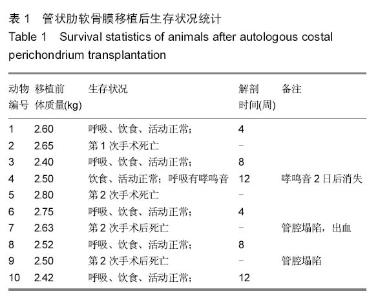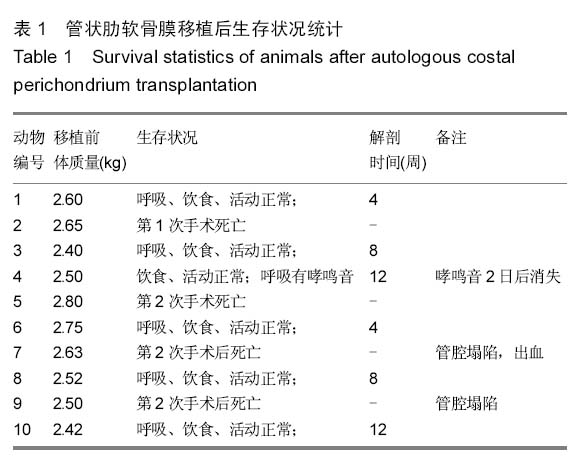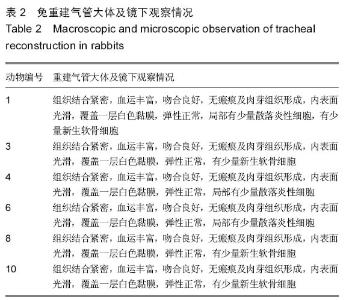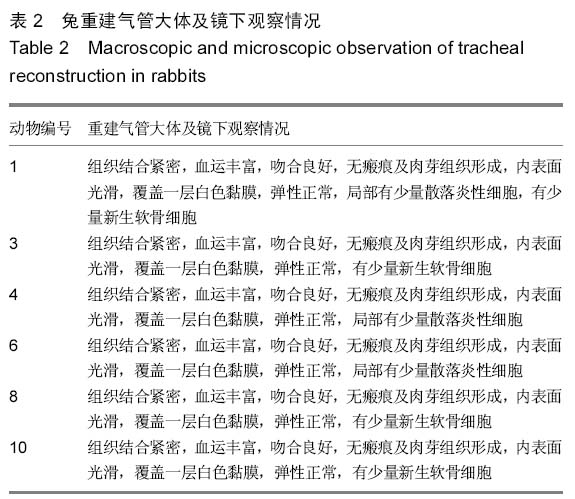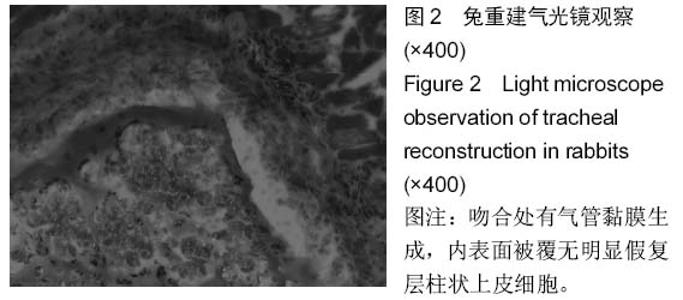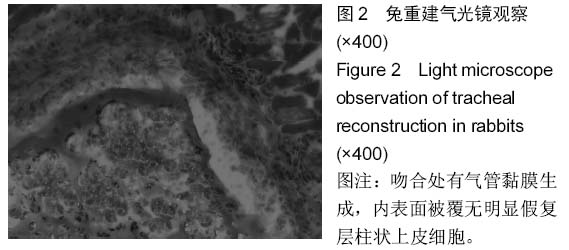| [1] Bentley G, Biant LC, Vijayan S, et al. Minimum ten-year results of a prospective randomised study of autologous chondrocyte implantation versus mosaicplasty for symptomatic articular cartilage lesions of the knee. J Bone Joint Surg Br.2012; 94(4): 504-509.
[2] Buchmann S, Salzmann GM, Glanzmann MC, et al. Early clinical and structural results after autologous chondrocyte transplantation at the glenohumeral joint. J Shoulder Elbow Surg.2012; 21(9): 1213-1221.
[3] Crawford DC, DeBerardino TM, Williams RJ 3rd.et al. NeoCart, an autologous cartilage tissue implant, compared with microfracture for treatment of distal femoral cartilage lesions: an FDA phase-II prospective, randomized clinical trial after two years. J Bone Joint Surg Am. 2012;94(11):979-989.
[4] Petroianu A, Barbosa AJ. Experimental reconstruction of anterior and circumferential defects of the Cervical Trachea. Laryngoscope. 1993;103(11 Pt 1):1259-1263.
[5] Hoff PT, Esclamado RM. Use of revascularized, tubed costal myoperiosteal graft for repair of circumferential, segmental tracheal defect. Otolaryngology-head and Neck Surgery. 1999;120 (5):706.
[6] Ergin NT, koc C, Demirhan B. Tracheal reconstruction With a vascularrized flap in rabbits. Ann Otol Rhinol Laryngol. 1998; 107(7):571.
[7] Koshima I, Umede N. A full thickness chondrocutaneous from the auricular concha for repair of tracheal defects. Plast Reconstr Surg.1997;99(7):1887.
[8] Meyer R,Reconstructive surgery of the trachea. NeW York: Thieme-stratton.1982:61.
[9] Fearon B, Cotton R. Surgical correction of subglottic stenosis of the larynx in infants and children. Ann Otol Rhinol Laryngol.1974;83(4):428-431.
[10] Prescott CA. Protocol for management ofthe interposition cartilage graft laryngotracheoplasty. Ann Otol Rhinol Laryngol. 1988;97(3):239-242.
[11] Neville WE, Bolanowski JP, Kotia GG, et al. Clinical experience with the siIicone tracheal prosthesis. J Thorac Cardiovasc Surg.1990;99(4):604-613.
[12] 张宾,王予辉.常用动物实验操作指南[M].上海:上海中医药大学出版社, 2007.
[13] Ian N, Pierre P. Graft healing in laryngotracheal reconstruction:an experimental rabbit model. Ann Otol Rhinol Laryngol.1999;108:599.
[14] Lusk RP. Crray S. Single-stage laryngotracheal reconstruction. Arch Otolaryngol Head Neck Surg. 1991;117:171.
[15] Kato R,Onuki AS,Watanabe M,et al.Tracheal Reconstruction by esophageal interposition:an experimental study.Ann Thorac Surg.1990; 49(6):951-954.
[16] Banis JC Jr, Chumkian K, Kim M, et al. Prefabricated Jejunal fress-tissue transfer for tracheal reconstruction:an experimental study. Plastic Reconstr Surg.1996;98(6): 1046-1051.
[17] Drettner B, Lindholm CE. Experimental tracheal reconstruction With composite graft from septum. Acta Otolaryngol.1970;70:401.
[18] Marlovits S, Aldrian S, Wondrasch B, et al."Clinical and radiological outcomes 5 years after matrix-induced autologous chondrocyte implantation in patients with symptomatic, traumatic chondral defects." Am J Sports Med.2002;40(10):2273-2280.
[19] Musumeci G, Loreto C, Carnazza ML, et al. "Lubricin is expressed in chondrocytes derived from osteoarthritic cartilage encapsulated in poly (ethylene glycol) diacrylate scaffold." Eur J Histochem.2011; 55(3):e31.
[20] Nixon AJ, Begum L, Mohammed HO,et al. "Autologous chondrocyte implantation drives early chondrogenesis and organized repair in extensive full- and partial-thickness cartilage defects in an equine model." J Orthop Res.2011; 29(7): 1121-1130.
[21] Polacek M, Bruun JA, Elvenes J,et al. "The secretory profiles of cultured human articular chondrocytes and mesenchymal stem cells: implications for autologous cell transplantation strategies." Cell Transplant.2011; 20(9):1381-1393.
[22] Fearon B,Cotton R.Surgical correction of subglottic stenosis of The larynx Preliminary report of an experimental surgical technique.Ann Otol Rhinol Laryngol.1972;81:508-513.
[23] Cotton R,Management of subglottic stenosis in infancy and childhood.Review of a consecutive series of cases managed by surgical reconstruction.Ann Otol Rhinol Laryngol. 1978; 87(5 Pt1):649-657.
[24] Cotton RT, Gray SD, Miller RP. Update of the Cincinnati Experience in pediatric Laryngotracheal reconstruction, Laryngosoope.1989;99:1111-1116.
[25] 张汝峰,陈丽萍.人工气管及气管支架材料的应用[J].中国组织工程研究与临床康复,2011,15(51):9651-9654.
[26] 王林毛,高文,陈昶.组织工程气管的构成和构建方法[J].中国组织工程研究与临床康复2010,14(28):5256-5259.
[27] 周昕.气管支架及人工气管材料的应用[J].中国组织工程研究与临床康复,2010,14(21):3923-3926.
[28] 刘福青.组织工程化气管的种子细胞研究[J].中国组织工程研究与临床康复,2008,12(29):5727-5730.
[29] 梁宗英,王晓斌,张旭.人工气管的研究进展[J].承德医学院学报, 2008,25(1):78-80.
[30] 郑立岗,王跃建,汤苏成,等.部分去黏膜游离空肠重建气管对气道黏液清除功能影响的实验研究[J].山东大学耳鼻喉眼学报, 2013, 27(3)66-68,72.
[31] 韩云,刘军,蓝妮,等.大鼠深低温冻储同种异体气管移植的实验研究[J].中国医科大学学报,2011,40(12):1079-1080,1084.
[32] 刘飞.异种去细胞真皮基质防止气管瘢痕狭窄的实验研究[D].第四军医大学,2013.
[33] 陈万生,焦英华,郝雁冰,等.人工气管移植实验研究[J].河北医药, 2010,32(8):906-907.
[34] 刘勇,李小飞,王沛.犬异位移植气管内骨形态发生蛋白诱导软骨再生作用的研究[J].华北国防医药,2010,2(1):3-6.
[35] 王兴.rhBMP-2诱导异位软骨修复重建兔气管缺损的实验研究[D].第四军医大学,耳鼻咽喉-头颈外科学,2011.
[36] 闫保星,贾代杰.自体肋软骨移植治疗颈部气管瘘9例报告[J].中国社区医师:医学专业半月刊,2009,11(14)176. |
